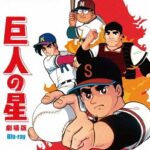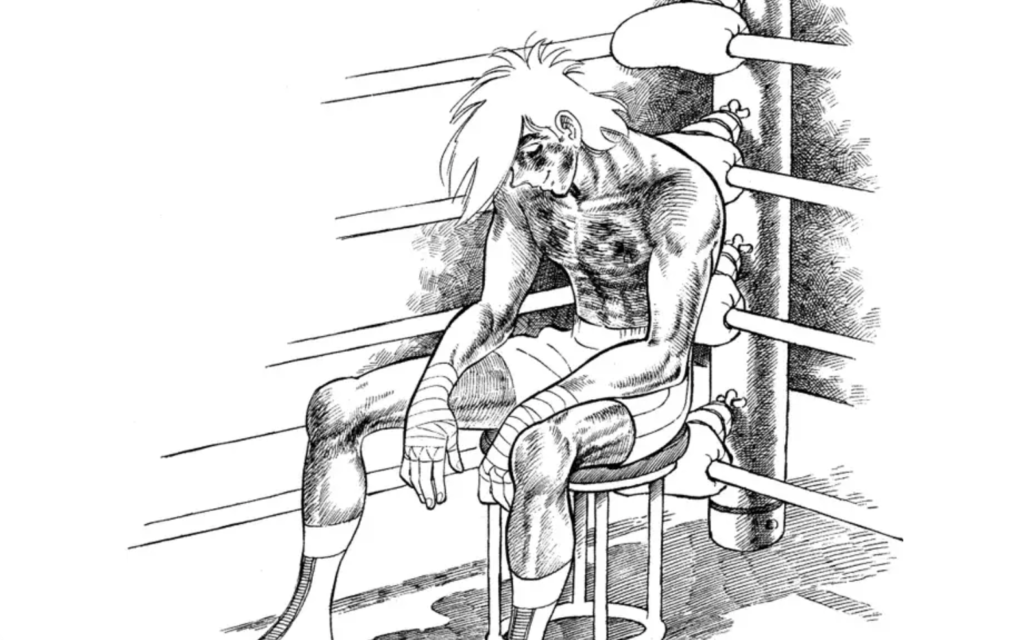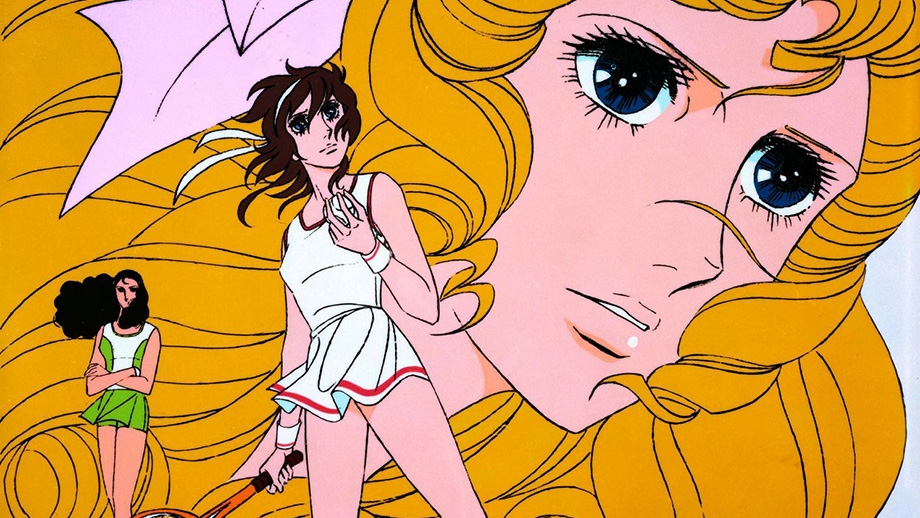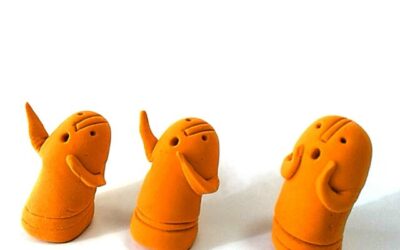In the 1960-70’s, the world was shaken by the Cold War between East and West, while Japan enjoyed remarkable development due to its rapid economic growth. Spocon, born at this time, was a symbol of Japanese spiritual culture.
How was the “SPOCON” Anime Born in ’60-70s?
Sports with “Konjo(根性)” Spirits

At first, what the “SPOCON” is, we describe.
Of this word, “SPO” stands for sports and “CON” for “Konjo”. This means devoting oneself to one sport and working hard at it. “Konjo” is a Buddhist term that originally meant “a person’s innate disposition,” but in the Japanese sports world, it has come to mean “the will and mental strength to persevere in the face of adversity.
Various western origin sports have been imported to Japan since the Meiji era (1868-1912), but they were not a means of social interaction and were concerned only with the pursuit of technical improvement and victory. The establishment of a coaching method and training system to realize these goals have been emphasized, and the word “Konjo” has appeared.
Although words that appeal to the spirit itself have been shunned since World War II, but at the 1964 Tokyo Olympics, volleyball, wrestling, and other sports introduced rigorous training methods that brought spirituality to the forefront, and the results were successful. This influence has created a trend of respecting the attitude of enduring hardship and effort, and the word “Konjo” has become popular not only in the sports world but also in the general society.
A Hard Coach, Extensive Trainings, and Special Techniques

In other words, the “Spocon” was a social phenomenon and a part of Japanese culture that was born in the wake of the Tokyo Olympics 1964. The most widely talked about symbol of this phenomenon was the women’s volleyball team that won the gold medal at the games.
The team was led by a Coach, Hirofumi Daimatsu. He was a veteran of “Operation Imphal,” the most grueling operation of the Pacific War. He trained the females under his strict guidance and practice, which earned him “Demon Daimatsu”.
Most members of this national team were from a corporate team Nichiboo-Kaizuka. All were known to each other, and this team, which was like a family, was unbeatable in Japan. In the third World Championships in 1960, in which they participated for the first time with that member, they won the silver medal. The winner was U.S.S.R, which had won the championship consecutively since the first World Championship. A few members of the team were considering retirement after this championship, but they were so disappointed by this defeat that they decided to withdraw their retirement and aim to overthrow them.
However, Daimatsu believed that the same practice would not be enough to defeat the physical superiority of them. Overseas players are taller and have longer arms and legs. This disadvantage was obvious in volleyball, which is played on the same field. To compensate for such weaknesses, the strategy of moving as much as the space occupied by foreign players was inadequate.
Then, he was inspired by the idea of a “rotating bump”, that immediately after receiving the ball while jumping, make a spin and get up to get back to the original position more quickly. He thought this would fill the space gap created by the physical disadvantage.
However, the technique was extremely difficult to master, and the practice was even more miserable. Their bodies were riddled with injuries from hitting the floor here and there. Nevertheless, the practice continued without a break, leading to increased public criticism of him.
Even so, their bond was unshaken, and through frantic practice, they all mastered the rotating bump, and even mastered their own unique drive serve, “Konoha-Otoshi,” making them champions in Tokyo.
Attack No.1
At that time, Japan was recovering from the postwar disaster and entering an era of rapid economic growth. People believed that if they worked hard and persistently, society would become more affluent.
Just as they became the world champion with their creative “rotating bump” and “Konoha-Otoshi serve”, this growth period was when Japanese manufacturers developed a succession of high-performance products such as portable radios, color TVs, and light cars, and made great strides into the global market.
Furthermore, the success of them, driven by the enthusiasm of the times, spawned the “Spocon Anime”, and many young people were influenced by these animes to take up sports competitions. “Spocon” was synchronized with the era of rapid economic growth.
In particular, “Attack No. 1” is an anime based on this volleyball team, in which the main character “Kozue Ayuhara” grows up playing volleyball with her friends, and takes on the challenge of competing on the world stage.
In this anime, Shunsuke Hongo is present as a hard coach and imposes extensive trainings on Kozue and her friends. He sometimes treats them coldly, sometimes proposes strategies and practices that no one could ever imagine, and there are glimpses of things he says and does that are incomprehensible from the other side. However, this method of coaching is based on the belief that “if you do it again and again without fear of failure, you will succeed,” which has led to the birth of special techniques, team unity, and the growth of each and every member.

Attack No.1
Media Type: DVD
Author: Chikako Urano
Language: JP
Availability: CDJapan
Other 3 Masterpieces of “SPOCON” Animes
#1: The Star of the Giants / Kyojin no Hoshi
“The Star of the Giants” is an baseball Spocon Anime broadcasted on TV from 1968 to 1971. The Giants is the name of a professional baseball team that was immensely popular at the time and has a long history that still exists today.
The main character, Hyuma Hoshi, was entrusted with his father Ittetsu Hoshi‘s dream from an early age and grew up with his hard coaching. As he grows up, his talent as a pitcher blossoms, and he eventually enrolls in Seiun High School, a prestigious baseball school, where he forms a battery with his best friend, Chuta Ban, and advances to the Koshien stage, the pinnacle of high school baseball.
In the process, he met rivals such as Mitsuru Hanagata and Hosaku Samon, and after a test to join the Giants, they shifted the battlefield to professional baseball. He then perfected the magic ball, the “Major League Ball,” and became a “Star” of the Giants both in name and in reality.(His name “Hoshi” means “Star” in English)

There are many highlights in this anime, among which their battle for the Major league balls (magic balls) is a must-see. They have three types of Major League Balls in this Anime: No. 1, which hits the batter’s bat in the air like a dangerous ball; No. 2, which disappears before the batter’s eyes; and No. 3, which escapes the trajectory of the ball due to wind pressure from the bat, all unique and outlandish.
Mitsuru Hanagata and other rivals practice with their lives on the line, even breaking their bodies, in an attempt to somehow break this magic ball. In the end, even his fellow teammate, Chuta Ban, moved to another team to try to break this magic ball No.3.

The Star of The Giants Theatrical Feature
Media Type: Blu-ray
Label/Distributor: TCEntertainment
Language: JP
Availability: CDJapan
#2: Aim for the Ace / Ace o Nera-e
The story follows a girl with no tennis experience who joins her high school tennis club only because of her admiration for her senior and grows as she is trained by a hard coach.
Hiromi Oka, a student at West School, a prestigious tennis high school, is an ordinary high school student who joined the tennis club because she admires the brilliant play of Reika Ryuzaki, called “Madame Butterfly”. She was leading an ordinary life until one day, her newly assigned coach, Jin Munekata, selected her as a player for the district qualifying round. She is perplexed by this sudden turn of events, and she is about to leave the tennis club. However, she is encouraged by Takayuki Todo, the leader of the men’s club, her best friend Maki, and the passion of Munekata, and begins to confront the destiny that has been placed in her.
Especially, the theatrical feature released in 1979 was produced by Osamu Dezaki. He has been called a genius in the animation world, admired by such artists as Yoshiyuki Tomino, who later created “Mobile Suit Gundam”, a work that would dominate the Japanese animation world. His works were woven with ingenuity that passionately and innovatively directed the movements and emotions of the characters.

Aim for the Ace Theatrical Feature
Media Type: Blu-ray
Label/Distributor: BANDAI NAMCO
Producer: Osamu Dezaki
Availability: CDJapan
#3: Tomorrow’s Joe / Ashita no Joe
Another masterpiece of Osamu Dezaki is “Tomorrow’s Joe”. He produced it as his first animated television series in 1970, when he was 26 years old. The story is that Joe Yabuki‘s talent blossoms when he meets former boxer Danpei Tange, and he eventually ends up in the ring with his mortal rival, Toru Rikiishi.
The year 1970 was also a major milestone in animation culture. Technically speaking, the introduction of the “Xerography,” that could carbon-copy the nuances of pencil lines in moving images onto celluloid drawings, made it possible to create a rough “Gekiga” touch.
It was also when the penetration of color TVs was rapidly increasing and black-and-white works were beginning to disappear, and new forms of expression centered on color, such as abnormal processing, were beginning to become possible. These new tools and expressions broke through past concepts of animation and became the weapons to fulfill these innovative thoughts.
As a result, experimental expressions appeared one after another in this work, creating a “world full of wildness” that is the opposite of today’s anime, where every detail is controlled, clean, and polished. The thick, blurred lines represent the speed of the punch, the impact of the cross-counter distorts the face, and the moment of settlement is fixed in a still image as an eternal moment. So, the entire image radiates a certain pressure that seems to slam down on you.

Until the 1960s, Japanese TV animation was mainly about “showing the characters” and was often considered to be for children. In the 1970s, “Lupin the Third,” “Space Battleship Yamato,” and many other unorthodox works established an audience of young people and above.

Tomorrow's Joe 2
Media Type: Blu-Ray
Author: Tetsuya Chiba
Availability: CDJapan



![[Anime History #1]Two Anime Works set in Universe boosted the Expansion of “Japanime”](https://blueselect1972.com/wp-content/uploads/2021/07/Space-Galaxy-400x250.jpg)

![[decole]Smart Watch Holder](https://blueselect1972.com/wp-content/uploads/2021/05/decole_watch_holder-383x250.jpg)
